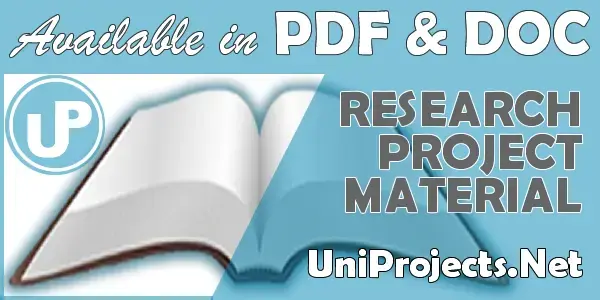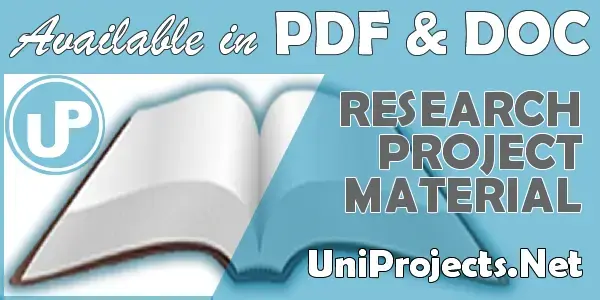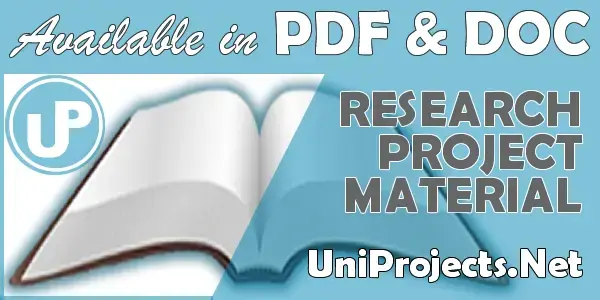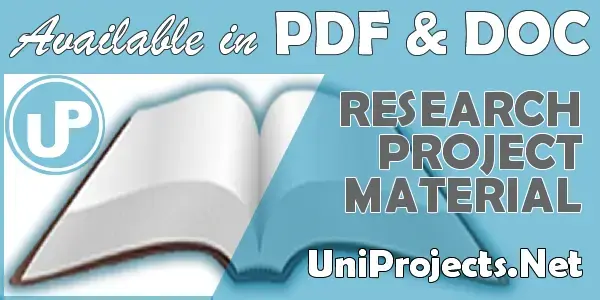Design And Implementation Of A Web Based Tourism Information System
Abstract
The use of Information Technologies have played and currently playing prominent roles in many organizations, such as business, education, commerce. The tourism industry has witnessed the use and application of various computer-based systems in carrying out one or more activities or operation. But currently there is no computer-based system tourist destination to integrate the tourists (from outside Nigeria) and tourists center within Nigeria, so that tourists can make a pre destination plan and decision before venturing into tourism journey to the country Nigeria. The authors of this paper proposed the design of Web based tourist information system, to provide tourist to Nigeria and its environ essential data and tools to managing their tours and to base all the decisions concerning to queries on the, tourist centers and hotels based on the following issue; climate, road conditions, cultural aspects, lodging, health facilities, banking, etc. of the location to be visited on sound and rational bases. Web based tourist information system for Nigeria will be developed using Java programming language and MySQL at the backend. This program is developed to allow the tourist to find their route in Nigeria and ask for information about sights, accommodations and other places of interest which are nearby to him to improve the convenience, safety, efficiency of travel and enhance tourism attraction of tourists.
Chapter One
Introduction
1.1 Background of the Study
E-marketing of regions and its settlements as well as tourist areas is of particular economic relevance for the tourism sector. For example, customers nowadays wish to obtain information about locations like hotels, restaurants, routes and tourist attractions directly, without mediation. For a user friendly representation, the data should be related to maps. There are two approaches to this problem: one is using GIS systems (e.g. Timčák, Vizi 2006, Vizi et al. 2008), the other is using Web technology. The GIS approach can also be implemented in a Web environment, but is far more complicated both for the user and for administrator. On the other hand, its range of services is greater than that of the Web technology. As in this project the aims were simpler, the second approach was chosen.
For many countries, either developed or developing, tourism is a very important source of foreign currency earnings and employment. Links between tourists and tourism destination is key success factors for integrated tourism development. Tourism is travel for recreational, leisure, or business purposes. The World Tourism Organization defines tourists as people “traveling to and staying in places outside their usual environment for not more than one consecutive year for leisure, business and other purposes”. (Archibong, Maurice 2004) Tourism has become a popular global leisure activity. In 2011, there were over 983 million international tourist arrivals worldwide, representing a growth of 4.6% when compared to 940 million in 2010. (AfrolNews 2013). Theirs possibility that somebody a tourists has never been to the place he or she wish to visit before, and he or she has no relative or friends in the place. For example academician from Canada to present an academic paper in a conference to be held in Lagos Nigeria and there is no available information on geographical location of Nigeria, her economy etc. This person has to decide on how to locate the country Nigeria and available tourist center for leisure, tourist attraction, to sleep overnight etc.
The so called tourist has prepared to Visit the country Nigeria for the conference. At a stage he or she has to decide on where to stay, visit and enjoy some tourist attraction within the period of the conference. The successful completion of this stage can be assisted by an Expert Decision Support System (EDSS) developed to analyses the perspectives and planned strategies of this tourism stakeholders.
This paper discusses the model, operation and suitability of a Web-based EDSS for integration of tourist and tourist centers in Nigeria. The paper concludes by assessing the usefulness of the web-based EDSS for tourism planners, and suggests areas for future research.
1.2 Statement of the Problem
The operation of Tourist Information Centre (TIC) which is done manually bring several problems. The current system need to be changed to computerize system because:
Through the manual system, staff needs to find the data based on the request by the tourist through the records. Normally, the tourists will ask questions about attractive places, accommodation that suitable with their budget and available transportation. Several tourist might be asking about the lower price accommodation but comfortable to them. The problem occurs when the staff of Tourist Information Centre (TIC) needs to search for all records of the accommodations, locations and transportation that suitable with the requirement. Sometimes, the staffs have to find it through the templates and brochures because all data are kept in different records. They have to go through one record by one record to find the result.
All data is kept using filed based system where -the staff needs to manage many files to keep data. Besides, if there is any particular information need to be changed or updated, the staff needs to fill up all the particular data in a new log book or re-write it.
The need of computerizing the system arises as a result of the sets of the problem faced. Tourism Information System (ITS) will be developed as a propose system to solve the problems that occurred. TIS is a web based application where the system is not connected to any other system. TIS uses its own database. The main purpose of developing this system is to computerize all the required information such as data information about accommodation transportation and location. Therefore all the data can be kept systematically and efficiently.
Besides, this system is able to manage and update all the data that can be used as a reference in the future. The users of this system are TIC staffs and tourists.
1.3 Objectives of the Study
As a guideline to conduct this research, the objectives for this study are outlined as follows:
- To design and build a prototype for Nigerian Tourism System in the web environment in order to improve the efficiency of the current tourism information management system.
- To design and build an online tourism guide consisting of multimedia elements to promote Nigerian tourism
- To develop a trip planner tool which incorporates decision support system characteristic to aid the potential tourist in direction for traveling in Nigeria.
1.4 Scope of Study
In order to be able to achieve the objectives stated above, the scope of the study is limited to the following:
- The study involves conducting research and analyzing the current operating tourism information management system managed by Nigerian Department of Tourism in order to identify and suggest improvement to the current tourism information system.
- The system is intended for the usage of potential tourist, management staff of the Nigerian Department of Tourism and tourism service provider including lodging and destination services provider.
- The system is designed to involve the management and handling of the databases and also included the report generation by the management staff of Nigerian Department of Tourism.
- The system is designed to provide a value-added service based on the characteristic of Decision Support System in which it will able to provide the potential user to generate a customize trip plan based on their selected destination, departure location, and budget. This features targeted non-package tour tourist that has interest to travel and explore by themselves.
- The study involves the requirement analysis, design, development and testing of the prototype to evaluate its usability.
- The system is based on web-based application and built in the Windows environment.
By determining the scope of the study, the subsequent processes in developing the proposed system as the solution to the research problem would be easier and has clearer defined boundary, which in turn act as a guideline in developing the system.
1.5 Justification of the Study
This work focuses on the use of Information Technology (IT) towards facilitating an overall national development through tourism. Tourism is vital for many countries due to the income generated by the consumption of goods and services by tourists, the taxes levied on businesses in the tourism industry and the opportunity for employment in the service industries associated with tourism. The various service industries associated with tourism will therefore derive immense benefits from the application of IT in tourism.
However, web based tourist information systems are required not to offeronline brochures only, but rather to provide both value and service.
With the advent of artificial intelligence and expert systems, which is aimed at mining human thinking and reasoning of experts, this feat in tourism information system, can be obtained. Tourism knowledge of experts can be stored and retrieved. The proposed web based tourism information system enables information to be retrieved at real timely.
1.6 Limitation of Study
For this study, the tourism system is designed to be as effective as it can be in terms of providing high quality of content to the web site user. However, due to time factor, only substantial amount of data will be collected for constructing and evaluating the usability of the prototype. Sources of data will be based on the fastest and most convenient method that is available. These include the sources from the Nigerian Department of Tourism and web sites of the tourism service provider involved. Hence, the actuality and reliability of the data collected might be affected as real-time data have to rely on frequent update from the sector involved.
Another limitation of the study is the trip planner tool which will be developed in the proposed system can only cover certain departure location only within Nigeria due to time constraint and the complexity of the calculation algorithm if more departure location are allowed in the trip generation process.
1.7 Research Methodology
Information gotten for this research work was through personal interviews and review of related documents.
MYSQL will be used to store the captured information about Cross River Tourism Industry and an index of users queries will be created and stored in the database. The front-end application will be using HTML (hypertext markup language).
The HTML pages presenting this information to the tourist will automatically be generated by the system in order to increase run time performance. Any time the underlying information changes, the affected pages will automatically re-generate.
The WAMP5 servers will provides the web implementation environment and the results will be displays in an index form.
The PHP (PHP hypertext preprocessor) scripting language will also be used for coding at the back-end.
1.8 Organization of the Study
The organization of this report is mainly divided into five chapters.
- Chapter one is the introduction to give an overall view of what this study is all about. This includes; the background of the problem, the statement of the problem, the objective and scope of the study, the theoretical framework of this research, the justification, limitation of the study and terms of references used in this report.
- Chapter Two of this report discusses the literature background concerning the design of the tourism information system.
- Chapter Three, discusses the methodology of the research that will be used to develop the proposed system and discuss about the analysis of the current system and based on the analysis, the architecture of the proposed system is constructed.
- Chapter Four will go into detail of the development process of the proposed system, system implementation based on the design from the testing of the proposed system, the overall system development including its advantages, limitation and recommendations. Finally,
- Chapter Five will conclude and give summary of this study.
1.9 Definition of Terms
1. Tourism Information System:
Tourism information system is a specific type of information system. It consists of all the information channels used in a business or community to promote itself as a tourism attraction gadget.
2. MYSQL:
Means structured query language which is used in querying a database through the use of commands
3. Web Server:
A web server is sometimes referred to as host which specifies the host name where WebPages reside.
4. HTML:
Hypertext markup language is the official web programming language, which used in the design of WebPages. HTML consists of various tags that are executed as a command. With HTML, tags are placed within the text to accomplish document formatting, visual features such as front size, italics and bold and the creation of hypertext links. Graphics may also be incorporated into an HTML document. HTML is an evolving language, with new tags being added as each upgrade of the language is developed and released.
5. Database:
A database is a single organized collection of structured data, stored with a minimum of duplication of data items so as to provide a consistent and controlled pool of data.
6. PHP:
It allows the separation of HTML code from scripted element. It also can remove obstacles that stand in the way of effective and flexible design. It also designed to run on many operating systems and to co-operate with many servers and databases.
Chapter Two: Literature Review
2.0 INTRODUCTION:
This chapter provides the background and context of the research problems, reviews the existing literature on the Design And Implementation Of A Web Based Tourism Information System, and acknowledges the contributions of scholars who have previously conducted similar research [REV45468] …








